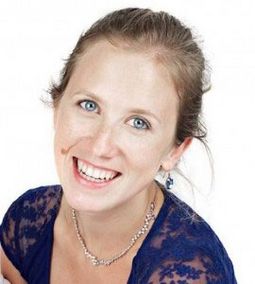
Sasha Luccioni
Sasha Luccioni, a machine-learning researcher who began postdoctoral work last February at Mila, heads up a project called Visualizing Climate Change. Led by her professor, Yoshua Bengio, the 29-year-old - born in Russia, raised in Toronto, educated in Paris and Montreal, with stints in South Korea and Argentina - specializes in helping people use artificial intelligence as an education tool. We asked her about her latest venture.
What's the project about?
The idea is to use certain types of neural networks called general adversarial networks which are able to create new content, give them the right set of training images, and thereby get them to generate new types of those images, based on probabilistic climate models. We started with images of flooding and got the networks to transform what the exterior of a given house will look like in future decades when it's affected by flooding.
Are the images specific to the property and its geolocation?
We're working on a prototype now: someone enters an address and then we query Google Street View for its GPS coordinates, and based on that we query the climate model, which in turn tells us how much water will be there, if any. Knowing the topology of the terrain, we can predict the water level.
Does it show the probability at different moments in time, or is it a snapshot?
The current prototype will give a snapshot in 2050, but eventually when things are working well, we want to give different climate futures. We're now working with a business-as-usual scenario to do our models, but there are scenarios that take into account how much effort is made to fight climate change, and if we use those we can show people what a difference they can make by changing their lifestyles.
Who is your target audience?
We're targeting young people between 16 and 30, because they're the ones who will be inheriting the current state of things, and also because of the educational aspect of it: - how climate change is affecting weather patterns, for instance. Young people are also a good target because they're more exposed to the internet and open to using the technology we develop, like a mobile app.
Are you trying to appeal to people's self-interest?
Yes, because the cognitive aspect of climate change is a real issue. Cognitive psychologists say that the problem is that if we don't see the direct impact on us, we care less. We're trying to change that, so people can see how a place that they care about can be affected and how actions by a community of people can change things in a specific and concrete way.
Have you tried your own address in the model?
I have, yes. We all have, on our team; Mila's street address, too. We've got the model working fairly well on those, but now we want to stress-test it on places that are outside what we already know, including rural and more far-flung places. People live in all sorts of places, in all kinds of buildings, and the more we have those the more robust the model will be.
When will the general public be able to plug in their own addresses?
We're aiming for early 2020; we want to soft-launch it first. The system is under password for now; people can enter their address and we can see the output image. We need to improve how it works: which images are doing well, which are doing less well, the best way to query Street View to get the best image. Then, when the final version is live, we'll launch.
And there'll be a mobile app?
Yes, it's called ClimatePix. People can send in their own photos, for example of flooding on the West Island or in Gatineau. Hopefully they'll send us more data to help us improve our model.
How to participate
You can help Luccioni and her team make the Visualizing Climate Change project a reality; upload your photos of flooded houses and streets to ClimatePix, with a brief description. Then check back in 2020 to see the completed website.






